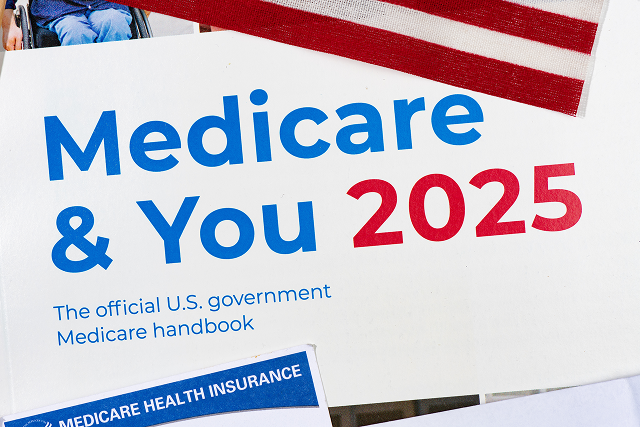Senior Insurance

Understanding Medicare Changes for 2025
When it comes to Medicare, staying informed about upcoming changes is essential. Every year, adjustments to premiums, deductibles, and coverage rules impact millions of Americans. For 2025, there were several updates that impacted beneficiaries.
What is Medicare
Medicare is a federal health insurance program primarily for individuals aged 65 and older, as well as some younger individuals with disabilities or certain chronic conditions. To understand the 2025 updates, it’s helpful to start with a quick overview of Medicare’s components:
- Part A (Hospital Insurance): Covers inpatient care in hospitals, skilled nursing facilities, hospice care, and some home health services.
- Part B (Medical Insurance): Covers outpatient care, including doctor visits, preventive services, durable medical equipment, and mental health care.
- Part C (Medicare Advantage): An alternative to Original Medicare that bundles Parts A and B, often includes Part D, and typically offers additional benefits like vision, dental, and wellness programs.
- Part D (Prescription Drug Coverage): Helps cover the cost of prescription medications, including many vaccines.
Understanding these parts provides insight into how policy updates might influence your healthcare costs.
Key Medicare Changes for 2025
Medicare adjusts its policies each year to reflect changes in healthcare trends, costs, and the evolving needs of beneficiaries. Here are the changes for 2025:
Part B Premium and Deductible Adjustments
Part B premiums rose 5.9% to $185.00 per month. Higher-income beneficiaries experienced larger increases due to income-related monthly adjustment amounts (IRMAA). Additionally, the Part B deductible increased 7% to $257, a moderate increase in out-of-pocket medical expenses for some enrollees.
Expansion of Telehealth Services
Telehealth services under Part B, which gained popularity during the pandemic, were expanded further, with new covered telehealth services, including additional mental health counseling and chronic care management. This is particularly beneficial for rural communities or individuals with mobility challenges.
Updates to Part D Prescription Drug Coverage
Significant changes were made to Part D prescription drug plans. These include:
- Adjusted Cost-Sharing Rules: Some plans cap out-of-pocket costs for prescription drugs, reducing the financial burden for enrollees with high medication expenses.
- Expanded Coverage for Specialty Medications: More coverage options were made available for high-cost specialty drugs.
- Improved Vaccine Access: Preventive vaccines, such as those for shingles, saw the cost-sharing reduced, making them more accessible to beneficiaries.
Changes to Medicare Savings Programs Eligibility
Eligibility rules for Medicare Savings Programs (MSPs), which help low-income Medicare beneficiaries cover premiums and other costs, were revised. Income and asset limits increased, which may expand access to these valuable programs to more individuals.
New Preventive Services
Medicare now covers additional preventive services to promote early detection and wellness, including updated screenings for conditions such as cardiovascular disease and diabetes, along with broader mental health assessments for seniors.
Medicare Advantage Modifications
The Medicare Advantage (Part C) program updates included:
- Enhanced Plan Availability: New Advantage plans were introduced in various regions, giving beneficiaries more options to choose from.
- Expanded Supplemental Benefits: Some plans now offer additional coverage for services like transportation to doctor visits or meal delivery for those recovering from a hospital stay.
- Cap on Out-of-Pocket Costs: Some plans now impose stricter caps on out-of-pocket expenses, providing greater financial protection.
Impact on Beneficiaries
The 2025 changes will impact Medicare beneficiaries differently, depending on their specific coverage and healthcare needs. Here’s how some groups may be affected:
- Beneficiaries with significant prescription drug costs may benefit from out-of-pocket caps and enhanced Part D offerings.
- Low-income beneficiaries could gain access to new Medicare Savings Programs as eligibility rules evolve.
- Seniors in rural or underserved areas will find it easier to access healthcare with expanded telehealth coverage.
- Individuals with chronic conditions or complex healthcare needs may see reduced costs due to improved coverage for specialty medications and supplemental benefits under Medicare Advantage.
Take Control of Your Medicare Coverage
It's important to understand the updates Medicare introduces every year. By staying informed, reviewing your options, and taking proactive steps, you’ll be better positioned to make the most of your benefits while avoiding unnecessary costs.
For personalized assistance in understanding how Medicare changes apply to your unique situation, don’t hesitate to connect with a licensed FTJ Senior Insurance specialist, who can guide you every step of the way.




